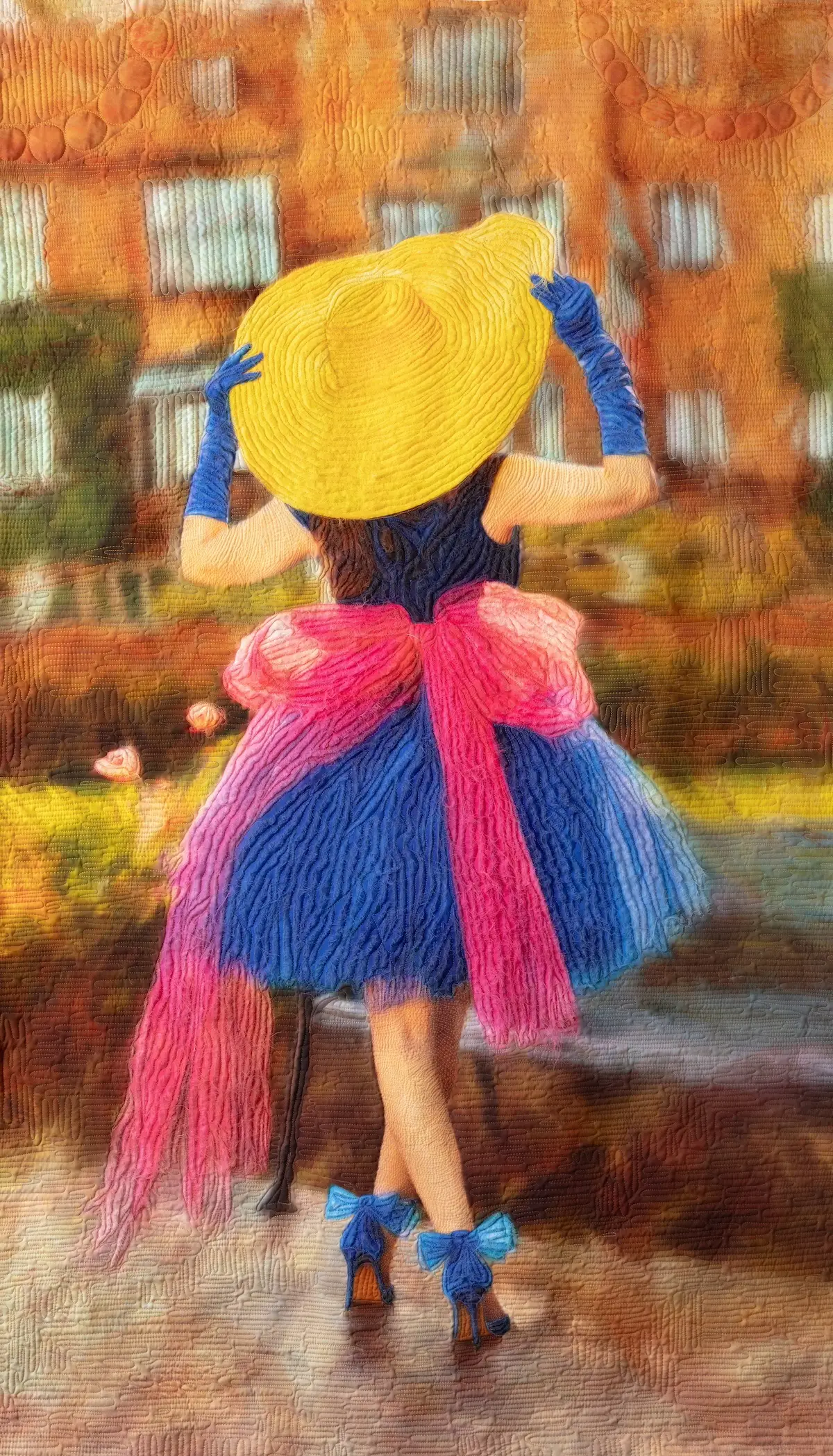Tasha Owen transforms her photographic eye into striking textile art, blending light, fabric, and story. Her quilts invite us into a world where images come alive through texture and thread.

How did your early sewing experiences shape your creative path?
I started sewing early, around 6 years old.
I had an aunt who made a living sewing and I would spend a month every summer with her. She gave me all the scraps, and I fell in love with making and designing Barbie clothing.
It gave me an outlet for all the ideas in my head of what to do with those beautiful scraps. I know my mom was thrilled as it kept me occupied as she was busy with my sisters.
As an Amazon Associate I earn from qualifying purchases. Read more about our affiliate linking policy.
When you received your first camera, how did photography capture your imagination?
Growing up photos were a huge part of my life.
My dad started taking photos in the Navy and he had a very good eye for it. He played with a film camera and then a Super 8mm movie camera.
I discovered I could wrap my sisters and the neighbor kids in fabric, call it a show, and then make them act in my movies. Aside from making the clothing and playing with the camera, I also got to boss everyone around. Oh yes… I was born to direct. LOL
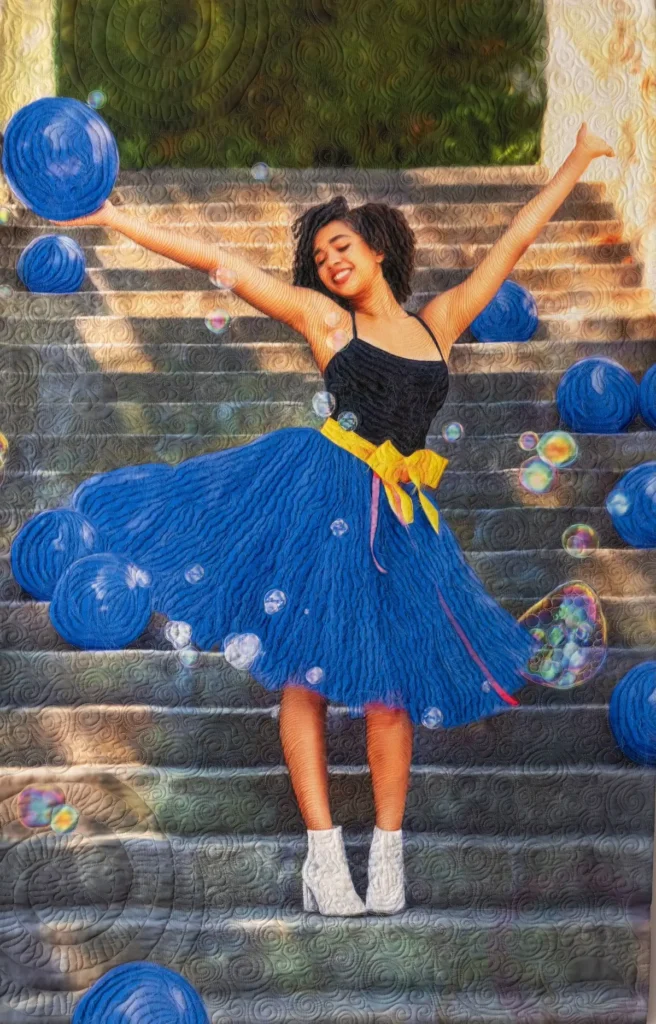
What moment or realization prompted your shift from a photography career into the world of quilting?
Sitting at my computer two years ago I was sorting through files, came upon photos from 40 years ago. I saw an image that was very dear to me, but I had really not thought about it in a long time.
I had no intention of combining photos and textile work. I did photography for a living. I didn’t want to merge the two.
I was photographing about 55 weddings a year and the thought of photography as anything other than work hadn’t crossed my mind. But, there I was looking at the image and well, just started playing. One thing led to another and within 6 months my work completely changed.
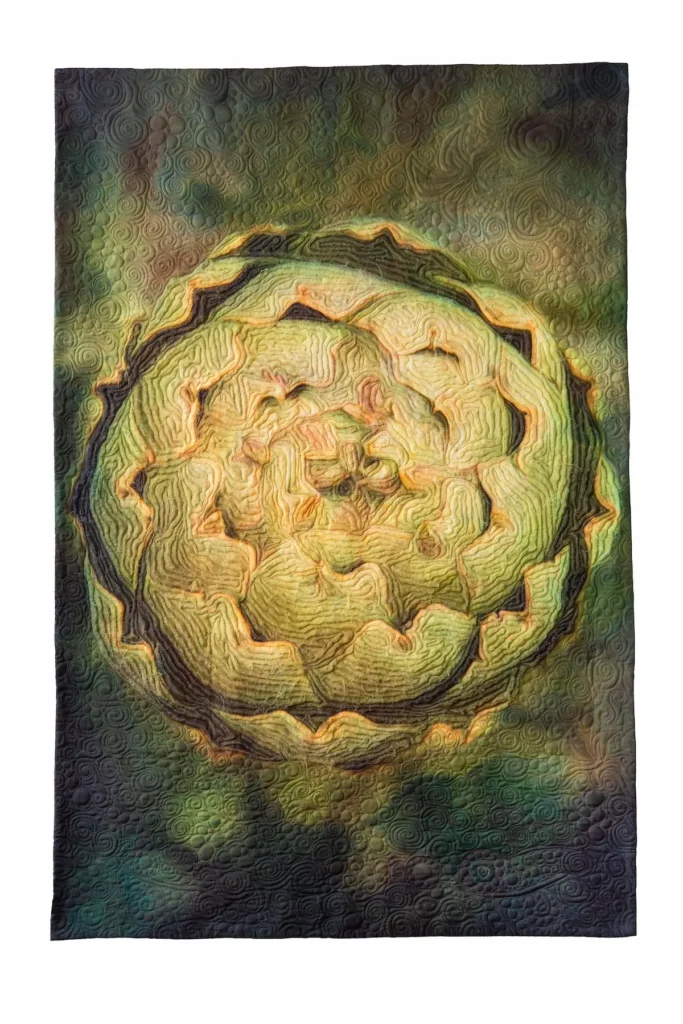
Where do you find inspiration for your quilt designs? Do moments in your photos reveal a spark of visual storytelling that led to quilts?
It seems that now everything feels like inspiration.
An onion cut up and photographed on a light table, a vase with red roses sitting on my dining room table…all of it new again.
Yes, I have photographed flowers before…but…now fabric is involved and it changes everything.
A silly blue petticoat became a series of expression of fantasy. Why did I think of it? I thought it would look pretty, and with the way I cut the layers I knew the petticoat would have wonderful texture.
Which comes first, the image or the story?
Usually the image, but I do have one photo where it was definitely story driven and it is now turning into a full fledge series of wrapping people in red gauze and taking their photos.
Describe your creative space
Oh, how I lust after a real grown up kind of artist studio, but as it is I have turned the main floor of our home into a textile studio. Thank goodness for my very patient husband, he has not once questioned my taking over half of the main floor, though he may draw the line at the living room.
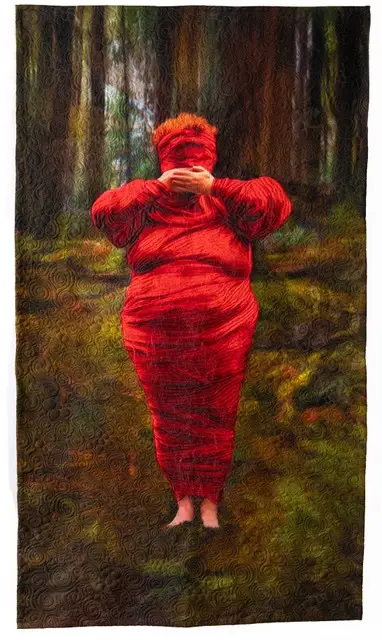
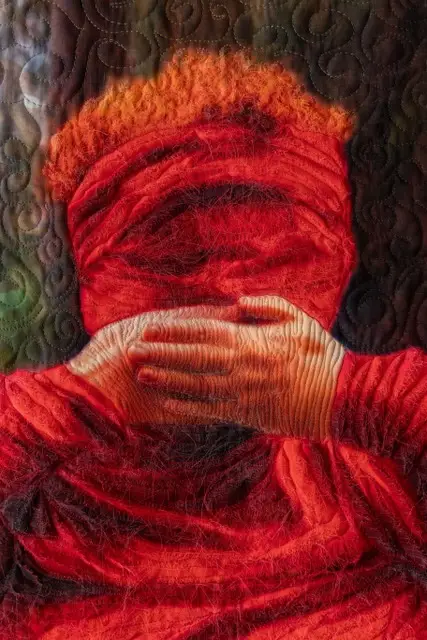
Can you tell us about the inspiration and process of one of your works? How does a new work come about?
Back at the beginning of this year (2025) a quilting organization was experiencing some censorship.
I read a post by one of their members and it so moved me that within one hour I was on location in the woods having myself wrapped in red gauze. I covered my face and put my hands across my mouth and felt the feeling of being censored.
That series has taken on a life of its own, and now ideas come from all around. People offer to be wrapped…it’s a definite collaboration.
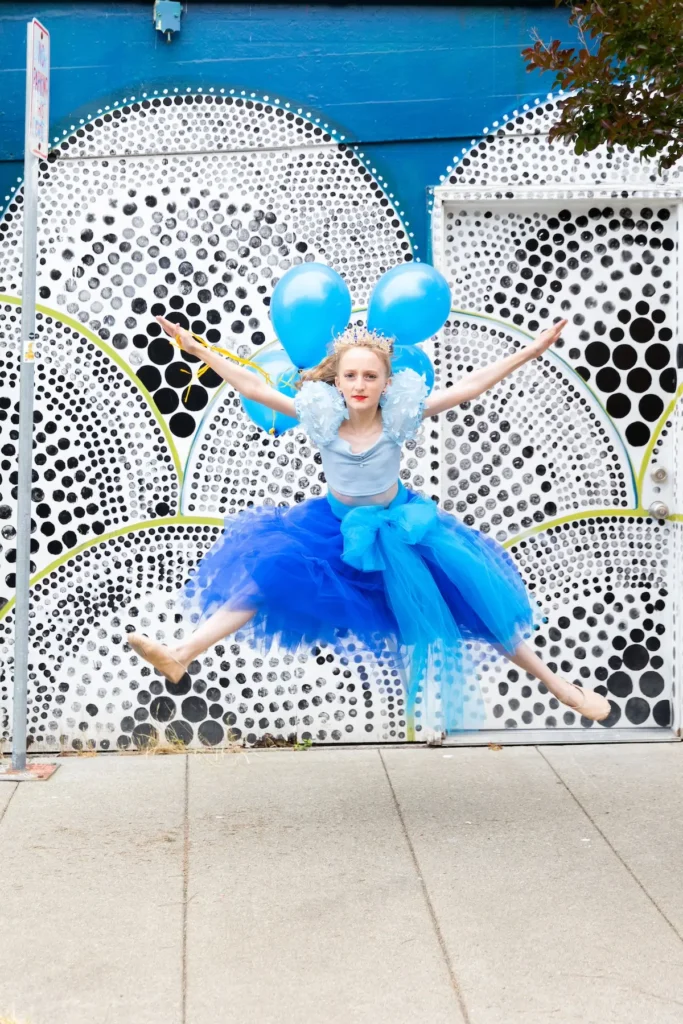
Once the photo is taken then comes the part at the computer where it changes into a whole different piece. Often the screen time can be around 30 hours or so.
I use digital painting tools working with a pen and a tablet for my computer. There are usually many layers of other images and textures over the original layer. Once I have that finished it is sent to a fabric printer.

I’m using RealFabrics and they do a super job. Takes about 3 weeks to receive it. Then its off to my light table. I’m pining several layers together of the same image and they need to be in register.
Next step is off to the long arm. I am always a bit nervous at the long arm as a wrong decision, and it can mess up the whole piece. Because of the different fabrics and layers ripping out stitches is not really a possibility without it ruining the top layer of chiffon.
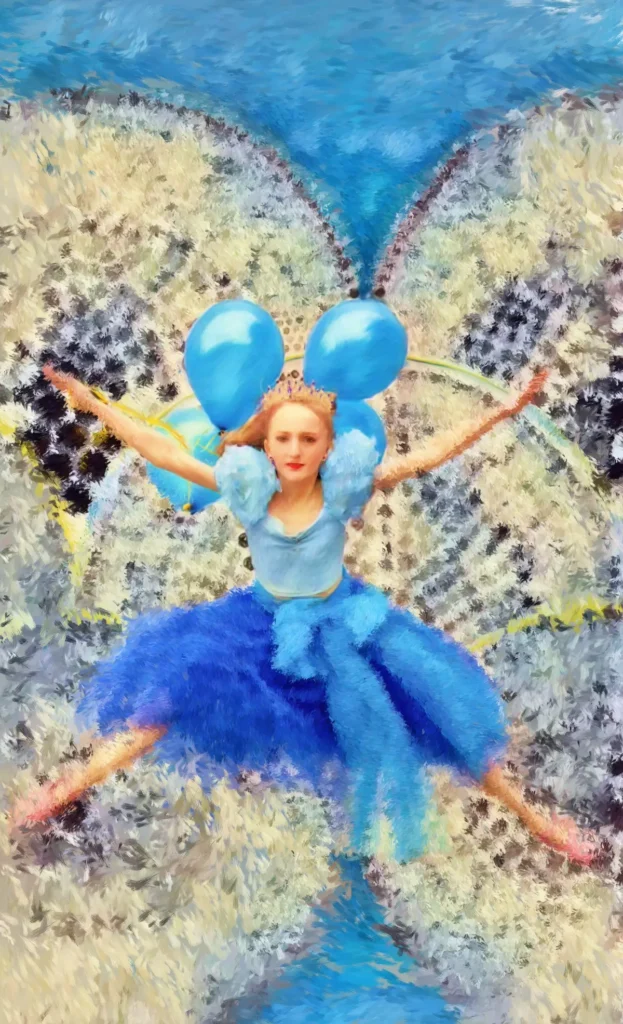
From the long arm its time to sit with an exacto blade and start cutting. My goal is to create lots of fraying thread which I also use wire brushes to make it even more pronounced.
The last step is using watercolor paints to accent parts. I guess that isn’t the last part…that would be the sleeve on the back…and of course it’s the part I hate doing the most!
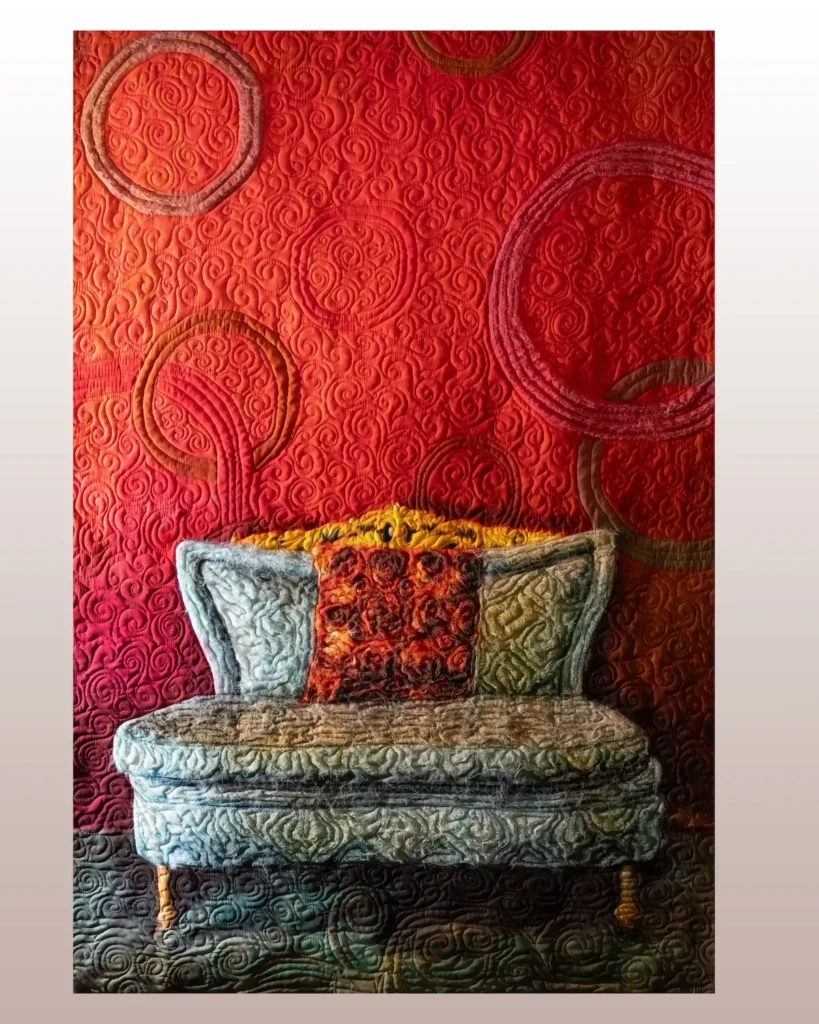
How do you balance digital tools with the tactile realities of fabric and stitches?
Interesting question. It’s less about the digital tools as it is about the initial taking of the photograph.
Getting the image the way I want it in the camera is the most important part. It’s the foundation of my work. Good light and composition are a must. Bad lighting is not fun to correct. Choosing the right backgrounds is important for the stitching part. Too busy and it loses visual focus.

Do you work on several pieces at once, or focus on one at a time?
I’ll usually shoot a couple of different series at different times as often my work is weather and light dependent. I do not quilt more than one at a time. Once I start the quilting part I finish before I begin another.
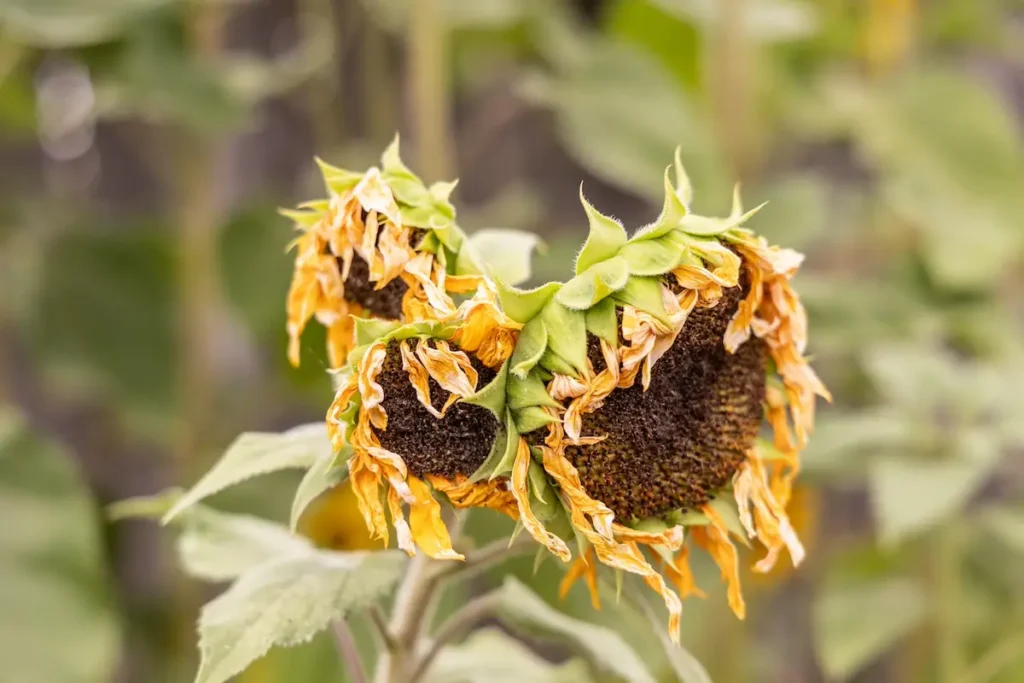
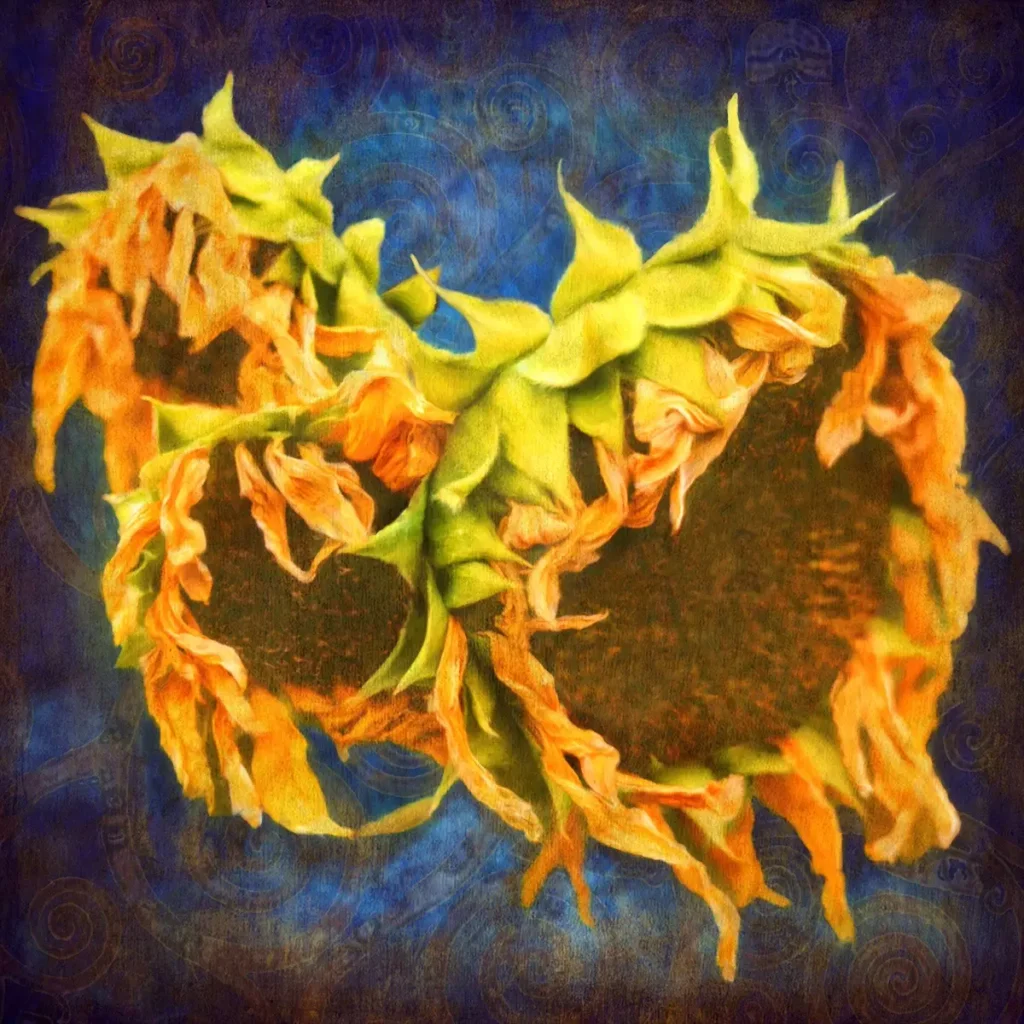
Can you share a time you hit a creative block or technical snag and how you solved it?
In 2023 I had breast cancer. I was still shooting weddings and going through treatment…I was tired. I had no space for quilting, not even an inspiring thought. It was the first time in my life I was frightened I would never be creative again.
I gave it time, and slowly the ideas started coming back. My sadness started lifting as I began to feel better. It was also right after this time in my life I merged photography with textiles. It felt like a gift.

Quilting is both visual and structural. How do you think about the physical construction vs. the emotional expression?
I love figuring out how to make things fit the emotional part of my process. They go hand in hand for me.
How do you decide when a piece is finished?
Hmmm…It’s a funny knowing.
Sometimes I finish at the computer and know this is it…then there are the images I have to come back to in a couple days.
Right now, on my design wall is a piece I have been looking at for a month, just hadn’t been feeling it. Even though it has been printed and is ready to start the other stages I knew it just wasn’t ready. No reason to even start when I feel like that. I identified what was bugging me and sat back down at the computer…resolved it and sent it off to be printed again.
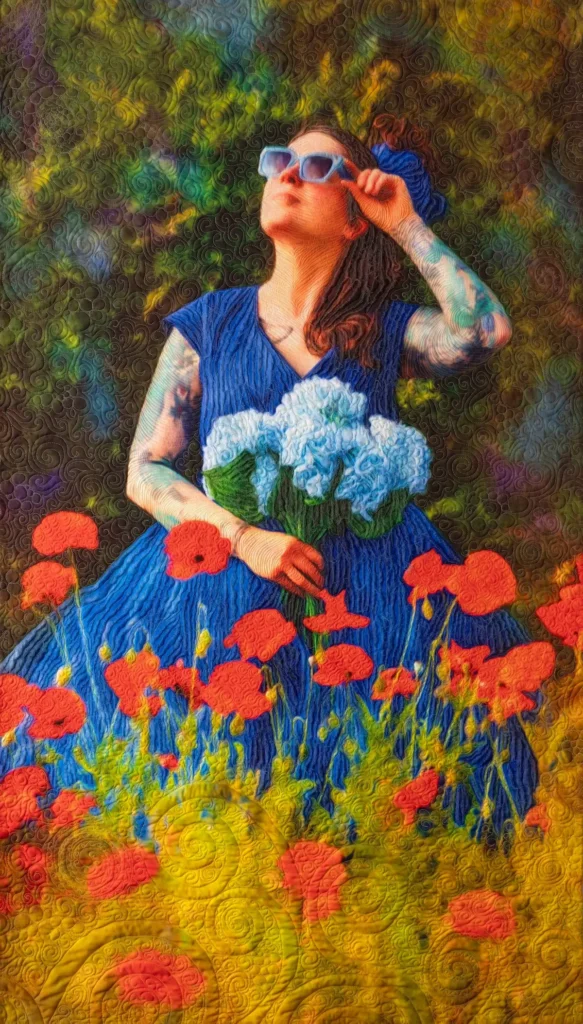
Transitioning your photography style into textile art, what’s been your biggest ‘aha’ moment?
I felt like I was cheating. I was trained very traditionally in quilting…hand piecing…hand quilting. Then my husband, who is also a photographer, asked me this question…” Did I feel any less a photographer when I switched from film to digital?” Of course I didn’t, so…this isn’t any different…it’s just another medium.
What lessons have you learned about patience and timing, as suggested by your pieces “Clematis”, “Peony”, or “Sunflower”?
I am a bit of a madwoman with the vision of a piece. I’m usually focused and don’t veer off track easily. When it comes to the physical construction part, I’m more laid back. There is a wonderful groove at the long arm which often feels meditative to me…but that all depends on what playlist I have going.
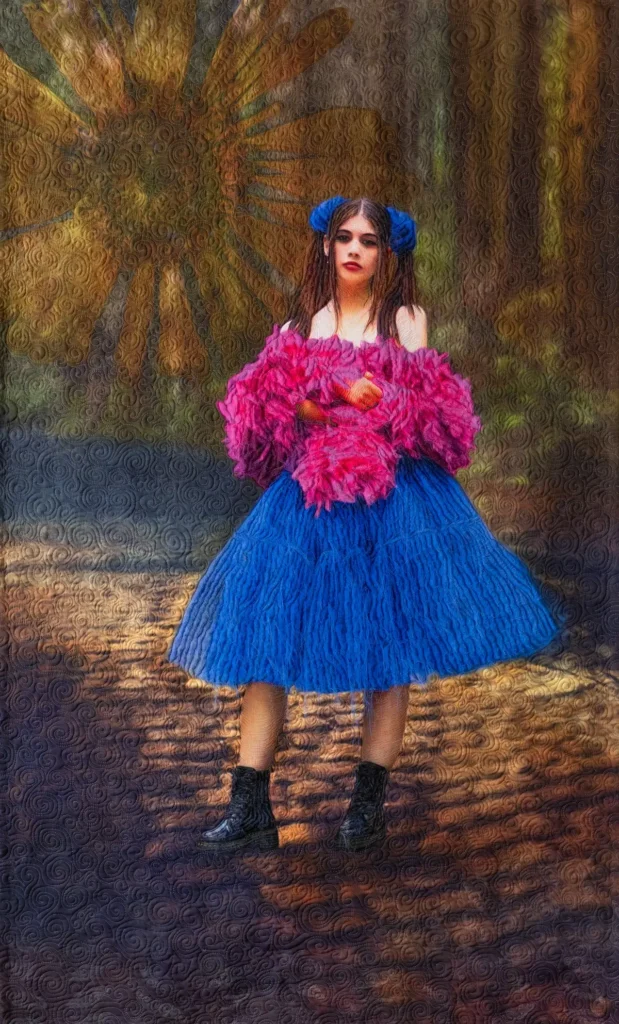
For photographers curious about quilting, what would you tell them is the biggest surprise? Technical or emotional?
First know your tools, but don’t get overwhelmed. Start from where you are, and when you feel you don’t know enough to produce your vision, then learn some more. For as much as it can seem like it’s the push of a button and voila, its done, I don’t find that true. The art of it still demands on the idea…on the vision…without that its like taking photos in the dark.
My biggest surprise was emotional as I discovered I loved taking photos more today that I did 45 years ago. I am so grateful now for all the years of having a camera in my hand, it has allowed me to put that knowledge I took for granted to a whole new use. But with all things, the important part is to start…make something…just start.
Can you share a tip for makers balancing multiple creative identities – photographer, quilt artist and business owner?
That is a tricky one. I’m still doing a few select weddings and do find it a bit strange to go back and forth between artist and wedding photographer. I do love the business of it and I like to look at marketing ideas and in that way my photography business has been a great tool. I will say though that at this moment I’m trying not to get too carried away with the whole marketing thing. I do not want to turn my textiles into a full-on business. I need time to develop who I am as an artist.
I am firm believer in keeping my word and have gotten pretty good at not committing if I can’t give something my all. If I say I’m going to do it I will usually do it, and if not, communication becomes the key.
Photographers can be a bit lax…lol…when it comes to deadlines and for me nothing stops energy quicker than missing deadlines and not keeping your word.
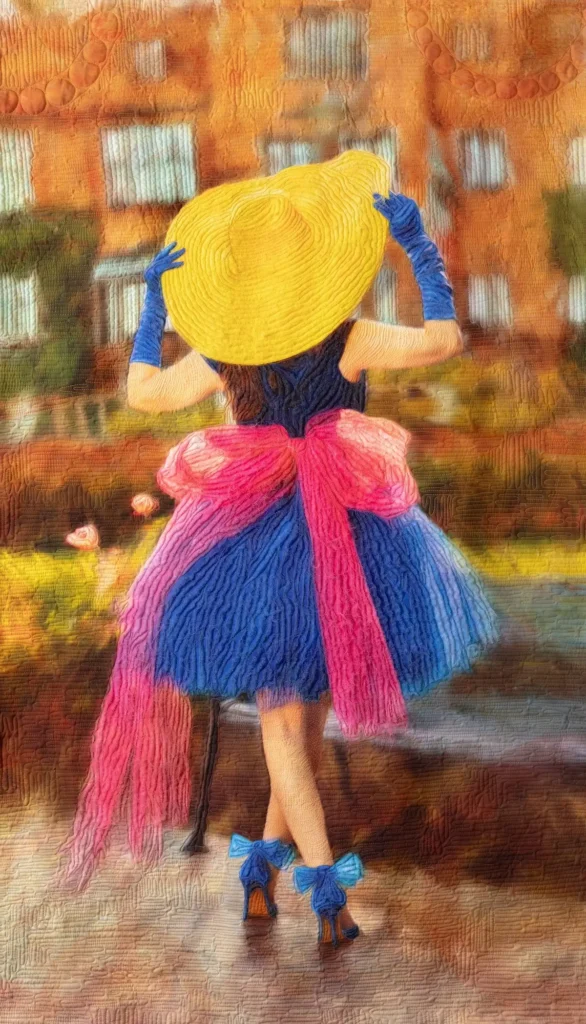
What advice do you have for quilt makers experimenting with digital image designs for the first time?
Start with an image you love…then look at it…really look at it. Decide what it is you want to say and then play with your tools.
Photoshop is where I work and it can be very intimidating, so keep it simple. I know there are simpler programs for digital manipulation so find one that works for them.

Where do you see your artistic practice heading in the next few years?
Growth.. and staying curious. Keeping myself open to new ideas, staying on top of the technology that is ever changing. Take care of myself and rest when I need to rest and create when it’s time to create. To trust that the process is with me…it may grow quiet at times, but it doesn’t leave.
Where can people see your work?
United Woman Art publication coming out at the end of the month.
William Schofield Gallery in Vancouver WA
Children’s Hospital in Chicago, Illinois. It will be there for two years.
www.tashaowenquilts.com
Instagram: Tasha Owen Quilting
Interview posted August 2025
Browse through more inspiring art quilts on Create Whimsy.

